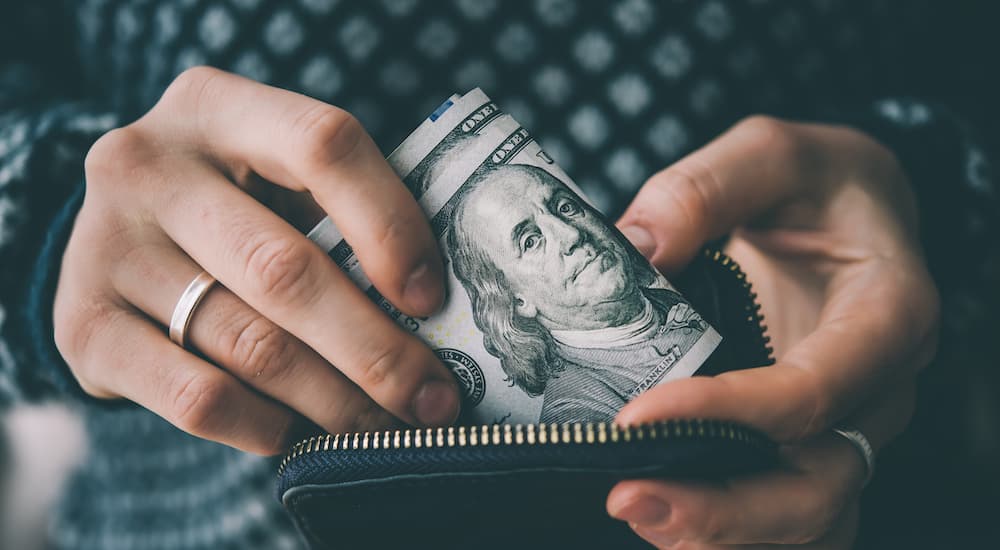When you decide to get a vehicle, you have two options: buying or leasing. Sometimes you go into the transaction unsure of which option to choose. When you buy a vehicle and finance it, it’s going to cost more per month than a lease. Knowing that, leasing a car is a great path to getting a vehicle that’s more expensive than one you can afford to buy. Leasing has become increasingly popular as people recognize this is an easier way to get behind the wheel of a new vehicle at a monthly payment that’s more in line with your budget. Leasing comes with other perks, too. Since leasing is only available for new cars, a lease term will include protection for parts that might break prematurely.
There are plenty of benefits to leasing over buying, and we will get into those details later on. Most lease terms are typically 24 or 36 months. At the end of that lease term, you’re faced with one of two options: return your lease and get a different vehicle, or buy out your lease and continue driving the same car. There could be a number of reasons you opt to do a lease buyout. Maybe you want more time with a car you love; maybe you don’t like any new vehicle as a replacement; maybe you go excessively over your mileage; or maybe you don’t want to deal with the costs associated with starting this process all over again. If that sounds like you, you’ve come to the right place. There are plenty of great reasons to buy your currently leased vehicle. We’ll go through these and what it looks like to buy out your lease at the end.
How Does a Lease Work?
Many people are unfamiliar with the details of leasing a car. Whether you’ve leased one in the past or not, there are some key differences that come up in leasing that don’t come up in buying. Leasing can be a great option; it’s a very predictable scenario. When you lease, you know exactly what your monthly payment will be and that you won’t be surprised by costly repairs since leased vehicles always come under warranty. You should be mindful that leasing comes with certain restrictions, however. For one, leasing comes with a mileage restriction. If you’re working from home or have short commutes, this won’t be an issue. Yet, if you know you’ll be exceeding the 10,000 or 12,000 mile/year limit, beware that it could cost you a lot if you return your lease. Some dealerships charge by the mile when you exceed your mileage, and that could potentially add up to thousands of dollars extra. Leases also dictate that you can’t modify your vehicle without facing charges. If a tire or wheel needs replacement, it needs to match the factory parts. That goes for painting, body panels, and changes to the interior. Leases expect you to keep your vehicle relatively clean and in good shape. They can also charge you for excessive wear and tear on both the exterior and interior. Many dealerships offer insurance policies that protect against certain wear and tear, so it’s smart to consider these options.

When to Consider a Buyout
Leasing is great for people who want to drive a new car every few years. However, sometimes we fall in love with our current lease, or we end up in a scenario where it’s more cost-effective to buy it out. If you find yourself in such a situation, you’ll have a few things to consider. Step one is to find your original lease contract and look at your predetermined buyout price. From here, you’ll have the parameters to make an informed decision.
Have your contract in hand? Great. Some lease agreements allow you to purchase your car at the time the lease is up, or beforehand. Similar to buying a pre-owned vehicle, you can purchase your current lease with cash or through financing. What you need to know about a lease buyout is that if you do buy your current lease, the cost will be based on the vehicle’s residual value from when the purchase amount was set at the original lease signing. At the start of a lease, there was a set price for the vehicle. When that lease term expires, the predicted value—called the buyout or purchase option price—will be based on those figures. This is a benefit of buying out your lease in today’s car market. If you took out your lease two or three years ago, the car prices were lower than they are today, thus saving you money on a comparable used car.
Financing Your Lease Buyout
Paying for your lease buyout isn’t drastically different from paying for any other used vehicle. There may be some lease-end fees, but you generally pay for the vehicle’s predetermined residual value. You can buy it outright with cash or apply for a lease buyout loan; the dealership where you obtained your lease should be able to handle either transaction from start to finish. While this dealer can do so on the spot, you should still do your research and shop around; there may be financing options with more favorable rates and terms than at your original dealership. If one of your goals for keeping your lease is to save money, it’s a great idea to shop around for the loan.

Other Factors to Consider
The most popular reason to do a lease buyout is that you love your car and wish to keep it. If that’s the case, you’re in luck. Not only is it doable, but it also might be your best financial move. When it comes time to finalize your decision, take the extra steps to ensure your residual value is a number that makes sense. It’s easy to take the details of your car—such as make, model, condition, mileage, and features—and plug those into a site like Kelley Blue Book purely to double-check that the price you’ll pay will match what your vehicle is worth.
If you feel neutral toward your current lease, but you’ve racked up excess mileage or a considerable amount of wear and tear, this is another great reason to do a lease buyout. Since dealerships charge steep fees for going over your allotted mileage and cosmetic repairs, doing a lease buyout is a great way to avoid incurring those fees. Paying to repair or recondition the vehicle before turning it in may not be worth what it would cost. When you have the residual value in front of you, you can use tools to plug in that figure, the loan term, and the APR to make sure you can afford the monthly payment.
That being said, a lease buyout is a big decision and one that should be made with caution. Should you be under your mileage, have minimal wear and tear, have a residual value that doesn’t match the current appraisal, or are simply not enjoying your vehicle, you should turn it in at the end of your lease and start fresh. However, if you happened to go over your mileage or incurred some expensive cosmetic damage, you may find it a lot more advantageous to purchase your current lease. If none of these circumstances apply, and you simply enjoy everything about your vehicle and don’t want a change, then the best option by far is to do a lease buyout.



